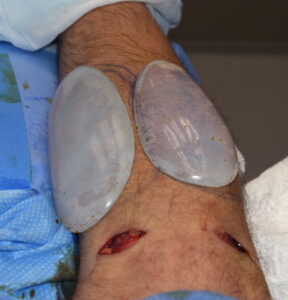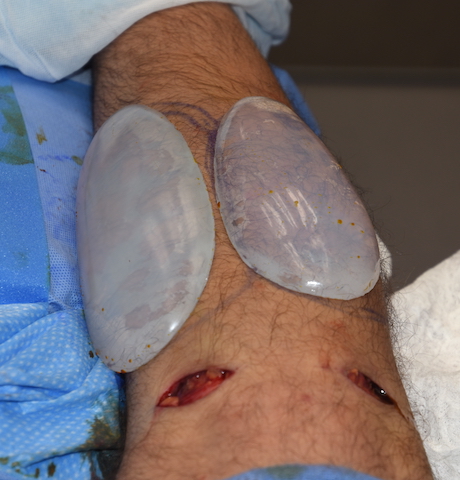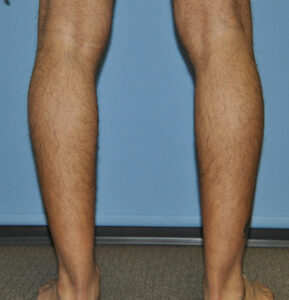The most common lower leg aesthetic augmentation method is that of calf implants. They are used for those patients who want larger calfs due to natural lower leg disproportion (‘chicken legs’), muscle atrophy due to injury (e,g. achilles tendon rupture) or congenital underdevelopment. (clubfoot)

In the June 2020 issue of the Aesthetic Surgery Journal an article was published on this topic entitled ‘Correcting of Calf Atrophy With a Custom-Made Silicone Implant: Contribution of Three-Dimensional Computer-Aided Design Reconstruction: A Pilot Study’. In this clinic study twenty-two (22) patients with calf atrophy due to illness were implanted with custom made solid silicone calf implants made by computer designing for each patient. The calf implants were packed through incisions in he crease of the back of the knee.
A total of forty-one (41) implants were placed. Medical complications included one case of seroma. Aesthetic revisions included two patients who sought implant size reduction. Concomitant fat grafting was performed in five patients.

The novelty of this calf implant study is the custom approach using CT scans for the design. Certainly that can make good estimates of they existing long and widths of the two heads of the gastric muscles and would provide the most accurate volumetric assessment when calf asymmetry exists. But with the large number of solid soft silicone calf implants styles and size ranges available today the custom design approach is more limited int usefulness than what it may have years ago.
Dr. Barry Eppley
Indianapolis, Indiana




